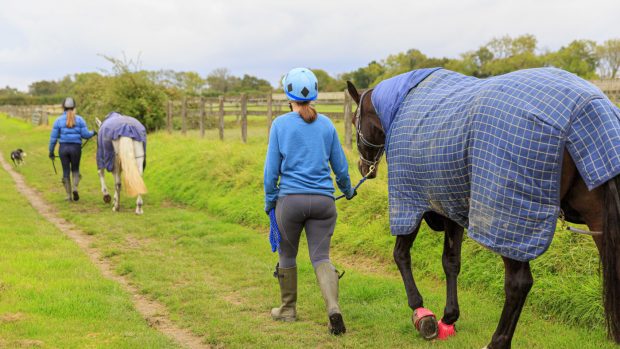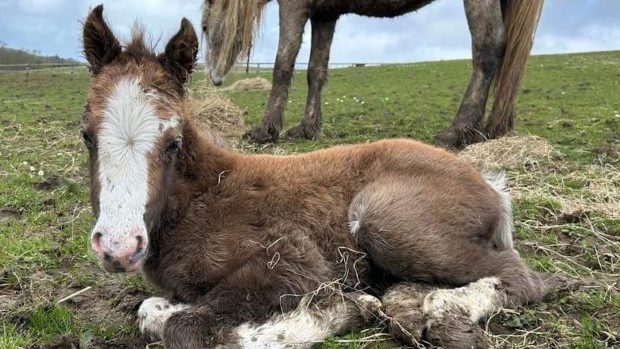THE pandemic has highlighted challenges faced by owners of horses and ponies at risk of laminitis.
A study, COVID-19 impacts equine welfare: Policy implications for laminitis and obesity, conducted by Scotland’s Rural College in collaboration with the Waltham Petcare Science Institute, aimed to assess how lockdown affected the management and welfare of horses and ponies prone to laminitis and obesity.
Following interviews with owners, farriers and vets, researchers concluded steps taken to protect public health during the pandemic – including reduced exercise, turning horses away, and limiting yard visits – had the potential to compromise the welfare of at-risk horses and ponies, and there was a need for guidance to highlight risk factors of laminitis and obesity, in the event of future lockdowns.
PhD student Ashley Ward, who led the study, told H&H participants felt guidelines issued by the Government and governing bodies were not attuned to the needs of horses with laminitis.
“People were finding themselves in a position where they were trying to stay in line with Government guidance at the same time as balancing their horse’s welfare,” she said.
“What we can take from this study is the guidelines we give to owners need to be really clear on what they can do for their laminitis- and obesity-prone horses.
“There needs to be a specific policy that can inform owners if they choose to take a certain action during a lockdown, what implications this might have on horse health and how to combat that. It’s all very well saying don’t turn your horse out because it will get fat, but owners need to be involved in the conversation about what alternatives there are.”
David Rendle, chair of the British Equine Veterinary Association’s health and medicines committee, told H&H the study is “multi-faceted” and highlighted a number of challenges faced by owners, farriers and vets during the pandemic.
“The study provides testimony that many horses spent additional time at grazing as a result of Covid guidelines. Vets have been concerned throughout the pandemic that increased turnout during periods of good weather could tip laminitis-prone animals over the edge into clinical laminitis,” he said, adding BEVA has seen particularly high numbers of laminitis cases this year and last, but it was impossible to quantify the contribution of the pandemic.
“The fundamental issue is the unacceptably high proportion of equines perpetually close to tipping over the edge because of obesity and associated metabolic disease.
“Most horses gain some weight over the summer, pandemic or no-pandemic, but what is often not appreciated is their need to lose weight during winter to restore their metabolism to normal prior to the next grazing season. It is important this year, as every year, owners engage with vets in establishing whether their horses are at risk and discuss plans for controlled weight loss programmes through autumn and winter.”
World Horse Welfare chief executive Roly Owers told H&H given the changes brought by the pandemic it was “not that surprising” the welfare of at-risk horses and ponies could have been compromised.
“The answer is not necessarily about more guidance because quality, accessible information on avoiding obesity and laminitis was abundant prior to lockdown. Many organisations – including the National Equine Welfare Council – work together to bring the latest information to owners and are always open to fresh opportunities to do so.” he said.
“At the start of the first lockdown World Horse Welfare, among others, provided frequently updated advice online and across social media covering the management of horses during restrictions, making any changes gradually and focusing on non-ridden exercise and weight management.”
Mr Owers added that many owners may have been unable to follow advice for reasons such as a lack of clarity on essential travel, restrictions on routine veterinary and farriery services, or yard access.
“The first lockdown also unfortunately coincided with a period of strong grass growth. What’s important is to make sure we learn lessons from the pandemic and expecting the unexpected has to be part of the planning with our horses.”
You might also be interested in:

Not just laminitis: vets warn of performance-related issues caused by excess equine weight

Coronavirus measures could lead to increase in laminitis

Autumn riding holiday special offers you won’t want to miss
We’ve sussed out 3 offers on autumn riding holidays — the ideal solution if you’re back from your summer holiday
Horse & Hound magazine, out every Thursday, is packed with all the latest news and reports, as well as interviews, specials, nostalgia, vet and training advice. Find how you can enjoy the magazine delivered to your door every week, plus options to upgrade your subscription to access our online service that brings you breaking news and reports as well as other benefits.





